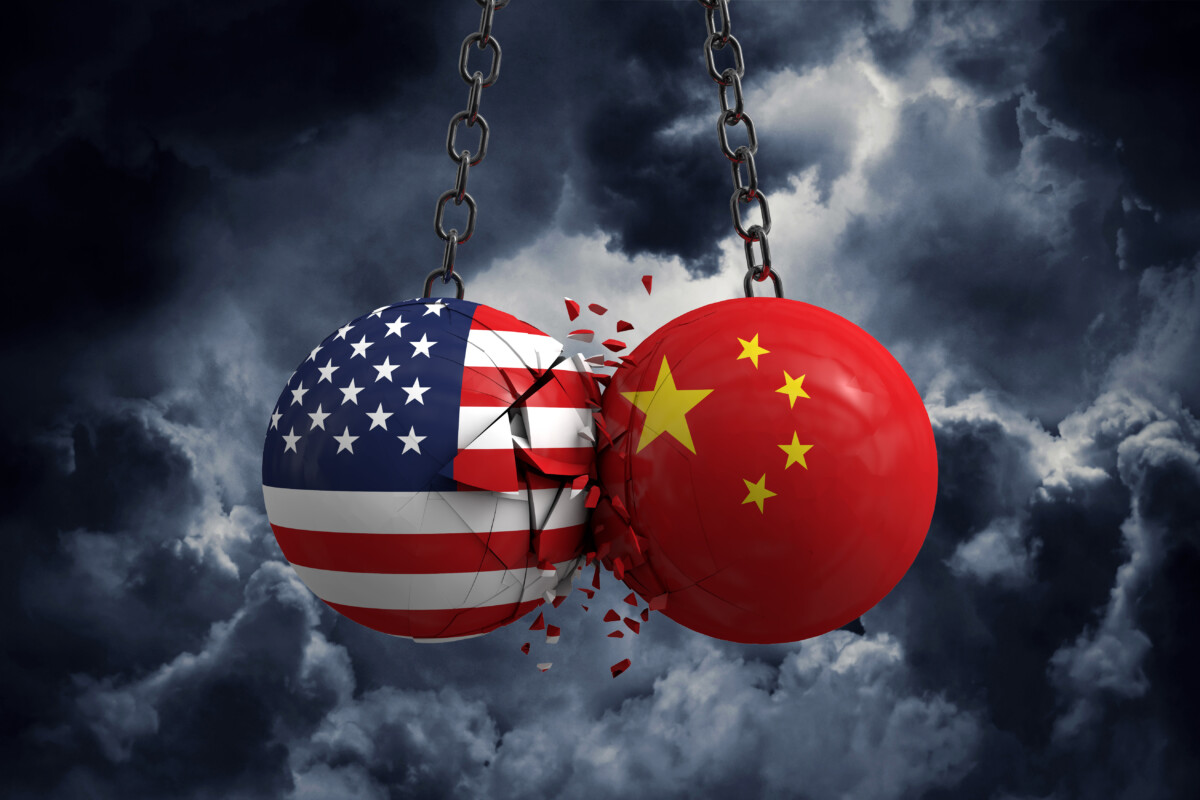What would a War
Between the U.S. and China Look Like?
By:
Alfredo Toro Hardy | September 28th, 2024

As the Cold War between the United States and China increases, so does the risk of
it turning into a hot war. The first possibility for this to happen is linked
to the several contentious issues between them, particularly Taiwan and the
South China Sea. The chance that any of these issues could unwillingly escalate
into an open war represents a real and present danger. The second possibility relates to either side
entering into war in a calculated and rational manner. Nothing precludes, for
the matter, that specific disputed issues could intersect with pre-existing
calculations, in which the decision to go to war has already been taken.
This second option is more
complex and as such deserves further exploration. A calculated decision to go
to war under the current circumstances existing between China and the U.S., could,
in turn, derive from two alternatives. One would fit within the so-called
Thucydides Trap. The other would respond to the so-called Theory of Power
Transition.
As
John Lewis Gaddis points out: “Thucydides repeats ‘the growth in the power of
Athens, and the alarm that it inspired in Sparta made war inevitable’ (…)
Thucydides keeps trying to tell us: that fear inspired by the growth
of Athenian power caused the Peloponnesian War”. (Lewis Gaddis, 2019, pp. 43,
48). Since the Peloponnesian War more than two thousand four hundred years ago,
the name of Thucydides, its great chronicler, has been associated with the
following notion: When a rising power threatens the preeminence of a dominant
power, the latter tends to unleash a preventive war before its superiority
fades away. Thus, the “trap” linked to his name. Graham Allison has identified
twelve major wars since the end of the fifteen century that fit into this
characterization. (Allison, 2018, pp. 41, 42). Not surprisingly, Martin Jacques
reflects the following: “The great danger is not the rise of China [per se] but
how the United States will react to this rise and to the consequent loss of its
primacy” (Jacques, 2018).
A
second option of a calculated war identifies itself with the Power Transition
Theory. Originally developed by A.F.K. Organsky and later expanded by other
authors such as Douglas Lemke, this theory explains how the emerging power, and
not the dominant power, tends to be the one that starts a conflict. (Organsky,
1968; Lemke, 2002). Emerging powers contesting an unsatisfactory status quo
that contains its ascent, would be naturally tempted to unleash a war. This
would be in line with the Chinese military doctrine, which highly values the
advantages of a surprise attack when the appropriate configuration of factors
materializes. (Singer and Cole, 2016).
Thus,
under the first approach, the United States would be the natural candidate to
trigger a war, while under the second it would be China. However, whatever the
circumstances under which war ensues, what really matters is the way in which
it develops. Two factors come herein into consideration: Scope and duration.
Meaning, how many belligerents would be involved in the conflict, and how long this
might last.
The most benign scenario in terms
of scope would be a confrontation limited to its two main actors: The United
States and China. Alliances tend to complicate negotiated solutions,
introducing additional agendas and grievances. The worst-case scenario, under
this perspective, would be a military alliance between China and Russia. This,
for three obvious reasons. First, because Russia’s status as a nuclear
superpower, and an increasingly loose one as well, could increase the risk of scalation
into this threshold. Second, because Moscow’s long list of grievances against
the West, particularly after the Ukraine war, could define the nature of its
participation in this war. Third,
because Russia’s involvement would in turn trigger NATO’s participation as
well.
The
duration of an armed conflict could be identified with different variables. The
most benign of them would be that of a short and punctual war followed by the
signing of a treaty that defines mutually agreed rules of the game. To the
contrary, the worst scenario would be a long war or, alternatively, an
unresolved state of belligerence susceptible of unleashing periodic armed
conflicts. Actually, according to the Power Transition Theory, periods of
hegemonic predominance usually last between 60 and 90 years, while conflicts
leading to the emergence of a new hegemonic leadership approximately last 20
years. The two chapters of the “long war” that took place between 1914 and
1945, in which Germany attempted to position itself as the dominant European
power, exemplify this type of conflict. Under this light, the most undesirable
option would be for China and the United States to engage themselves in a
continuous, or periodically erupting, long-term conflict.
Let
us hope that none of the above ever materializes and that, albeit unavoidable
tensions between them, China and the U.S. could peacefully coexist. Realistically,
though, the possibility of preserving peace amid rising and continuous rivalry,
diminishes with each passing day.
Author’s Bio:
Alfredo Toro Hardy, PhD, is a retired Venezuelan
career diplomat, scholar, and author. Former Ambassador to the U.S., U.K.,
Spain, Brazil, Ireland, Chile and Singapore. Author or co-author of thirty-six
books on international affairs. Former Fulbright Scholar and Visiting Professor
at Princeton and Brasilia universities. He is an Honorary Fellow of the Geneva
School of Diplomacy and International Relations and a member of the Review
Panel of the Rockefeller Foundation Bellagio Center. Views are personal.
References
Allison, Graham (2018). Destined for
War: Can America and China Escape the Thucydides’ Trap? Boston: Mariner
Books.
Jacques, Martin (2018). “Can the West’s
democracy survive China’s rice to dominance?”. The Economist, June 14.
Lemke, D. (2002). Regions of War and
Peace. Cambridge: Cambridge University Press.
Lewis Gaddis, John (2019). On Grand
Strategy, London: Penguin Books.
Organsky, A.F. K. (1968). World
Politics. New York: Random House.
Singer, P.W. and Cole, August (2016). Ghost
Fleet. Boston: Eamon Dolan Book.